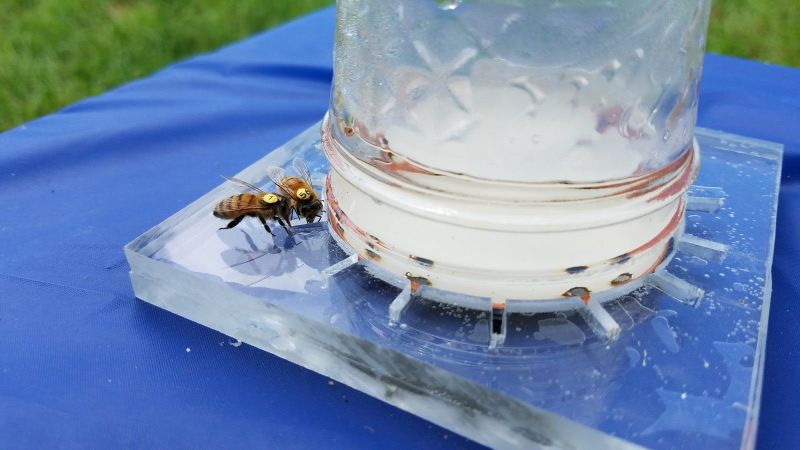“In effect, a bee from England would understand a bee from Virginia and would find a food source in the same way with a similar success rate.”

Researchers at Virginia Tech have deciphered the universal language of honey bees.
BLACKSBURG – For Virginia Tech researchers Margaret Couvillon and Roger Schürch, the Tower of Babel origin myth – intended to explain the genesis of the world’s many languages – holds great meaning.
The two assistant professors and their teams have decoded the language of honey bees in such a way that will allow other scientists across the globe to interpret the insects’ highly sophisticated and complex communications.
In a paper appearing in April’s issue of Animal Behaviour, the researchers present an extraordinary foundational advance – a universal calibration, or for science fiction aficionados, a “babel fish,” that translates honey bee communications across sub-species and landscapes. By deciphering the instructive messages encoded in the insects’ movements, called waggle dances, the teams hope to better understand the insects’ preferred forages and the location of these food sources.
“Before we can feed pollinators, we need to know when and where they need food. We must decode waggle dances,” said Schürch, the paper’s lead author. “So, this is a fundamental first step.”
The researchers analyzed the dances of 85 marked bees from three hives.
Honey bee transmissions, as it turns out, have echoing agricultural, environmental, and economic ramifications. The USDA estimates that one out of every three bites of food in the United States depends on honey bees and other pollinators. In monetary terms, insect pollinators support crop yields and agricultural ecosystems and are believed to contribute an estimated $24 billion to the U.S. economy annually.
The College of Agriculture and Life Sciences team’s work is part of a larger grant from the Foundation for Food and Agriculture Research, a nonprofit established through bipartisan congressional support in the 2014 Farm Bill. Couvillon and Schürch, along with fellow Department of Entomology assistant professor Sally Taylor and Megan O’Rourke, an assistant professor with the School of Plant and Environmental Sciences, are examining pollinator behavior in different landscapes to determine where and when planting supplemental forage could have the most positive impact on pollinator nutrition and health.
Nearly six decades ago, Karl von Frisch, a Nobel-prize winning ethologist, discovered that the angle of the dancer’s body relative to the vertical encodes the direction of the forage, and the distance to the food source is communicated by the duration of the bee’s dance.
During the waggle dance, a successful forager returns to the hive and communicates the distance and direction from the hive to the food source by performing multiple, repeated figure-eight-like movements called waggle runs.
Because of the challenge and cost of creating an original duration-to-distance calibration, von Frisch’s calibration model, which is based on averages rather than data on individual bees, has served as the gold standard in the bee research community.
Yet, according to Couvillon and Schürch, different bees conveying the same location can vary their waggle runs, and even individual bees repeating a run may alter their dance. Moreover, bees are inspired to dance only when they have located particularly tantalizing food resources. Anomalies such as these, coupled with a greater understanding of bees’



